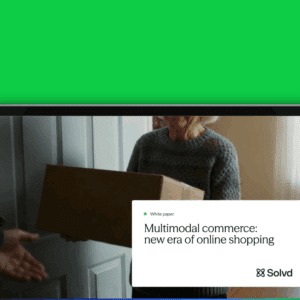By Aaron Roy, Bond

Any retailer knows the importance of customer loyalty. According
to recent research from EY, almost nine out of 10 retailers believe a
loyalty strategy is key to their business success. But contrary to what the
industry seems to believe, the truth is that loyalty isn’t built with points — nor
the discounts, free shipping or exclusive offers that come with them.
In today’s world, cultivating true customer loyalty requires going
one step further by actually making emotional connections with their customers —
something that Forrester recently described as “one of the strongest unique drivers of
loyalty.”
So, how can retailers tap into their customers’ emotion? One way
is by sending them thoughtfully-crafted handwritten notes — a strategy that
Bond found would actually make 61% of Americans view a company more favorably.
With that in mind, here are three ways retailers can leverage
handwritten notes to build customer loyalty:
Acknowledging Special Moments On The Customer Journey
Along the customer journey, there are certain interactions that
deserve recognition: for example, if a customer makes a very large purchase,
refers new business, renews his/her membership or makes repeat purchases. Each
of these interactions is a key moment to engage the customer and drive brand
loyalty.
Many retailers already call attention to these crucial moments by
sending follow-up emails, but they ultimately fail to have the same emotional
impact as handwritten notes. The same Bond survey found that 81% of respondents
regarded handwritten notes as more meaningful than email or text. It’s
incredibly easy to delete an email, but very difficult to resist opening a
personalized, handwritten note.
There’s a solid business case for handwritten notes, too. In a
campaign this past fall, apparel brand Love Your Melon sent a handwritten note to customers after
they made a purchase of at least $100. The result? The company noted a 160%
increase in sales from customers who received handwritten notes compared to
those who received thank you emails.
Apologizing For Bad Experiences
Over recent years, customer experience has taken center stage. It
makes sense, too. ClickSoftware estimates that poor customer experiences cost U.S.
businesses $83 billion each year due to defections and abandoned purchases.
The company also found that 89% of customers who experience bad customer
service will actually leave a brand for its competitor.
For this reason, retailers should take the time to send
handwritten notes to their customers who had a bad experience, apologizing and
offering some sort of compensation. Since such handwritten communication is
often reserved for close personal relationships, this extra effort can show
customers that the company values not just its customers’ business, but also
them as individuals.
With brands being more conscious of cost of acquisition and
lifetime value than ever before, the handwritten note is an essential tool that
could make the difference between churning a customer or engaging the customer
and building brand loyalty.
Thanking Customers For Their Patronage
In addition to reactively sending apology letters, retailers can
also proactively send handwritten notes thanking customers for their patronage.
If a customer is loyal to a company, the company should be loyal in return.
Loyal customers deserve to be recognized in a way that makes them feel that
brands value them just as much as they value those brands.
Many companies say thank you by sending small gifts or offering
exclusive promotions, but it’s easy to go the extra mile. When sending a gift
to a customer, including a handwritten note is a simple way to make him/her
feel important, and less like one name on a long list of customers. In the same
way, handwritten notes can include the special offers. We’ve seen that many
customers even reach back out thanking companies for the thoughtful gesture.
This kind of proactive loyalty strategy has been shown to be
particularly effective. The University of Florida’s athletic department, for
example, sent handwritten notes from the school’s Head Football Coach, Jim
McElwain, thanking season ticket holders who hadn’t yet renewed their seats for
their patronage. This campaign resulted in an 80 times return on investment, with 15% of recipients renewing their tickets
within just one week of receiving the letter.
In order to show customers that they matter to a company just as
much as the company matters to them, handwritten notes can play an important
role. Whether they’re sent to acknowledge a certain interaction, apologize for
a bad experience or simply thank customers for their patronage, handwritten
notes consistently prove their value and boost customer loyalty.
Aaron Roy is a passionate
product leader who enjoys building teams that deliver incredible digital
products into the hands of consumers and enterprises alike. He is the Chief
Product Officer at Bond (acquired by
Newell Brands), leading their product, marketing, and sales teams. Prior to
that he was part of the founding team at 3DPrinterOS, the
world’s first cloud management platform for users, files and 3D printers.






